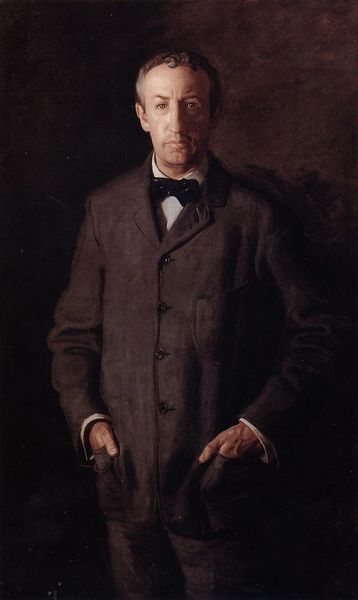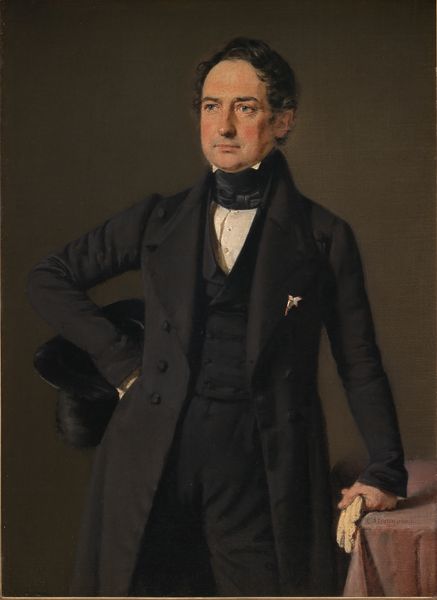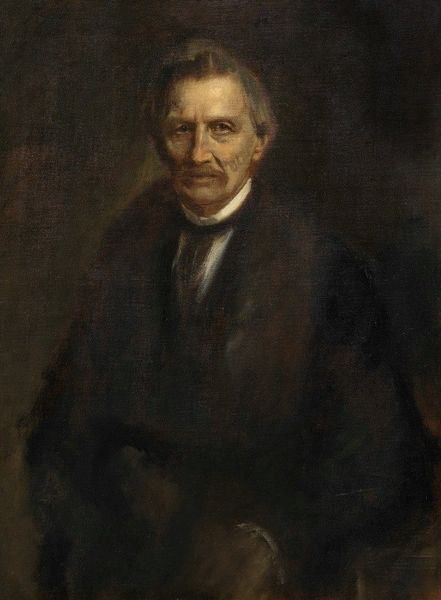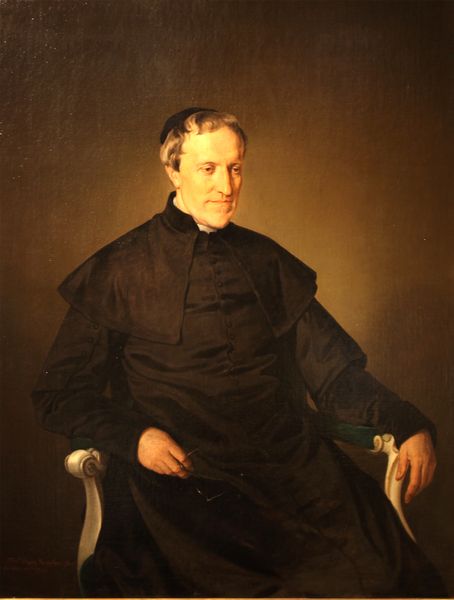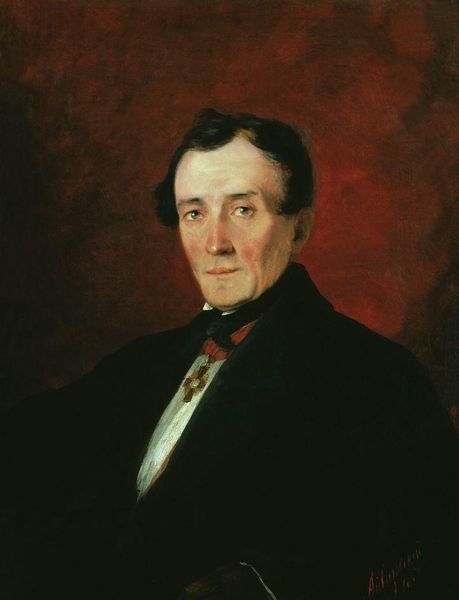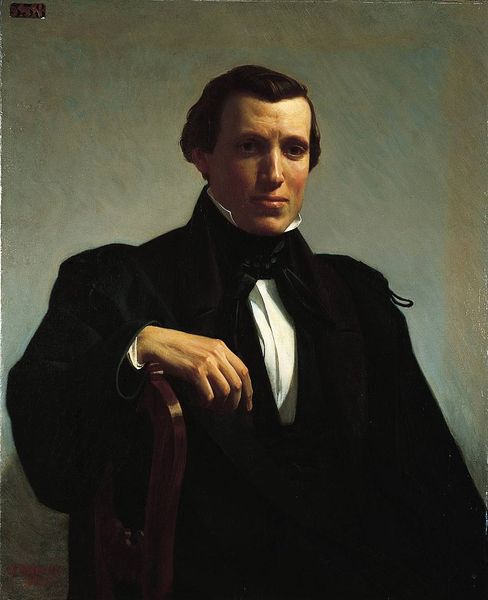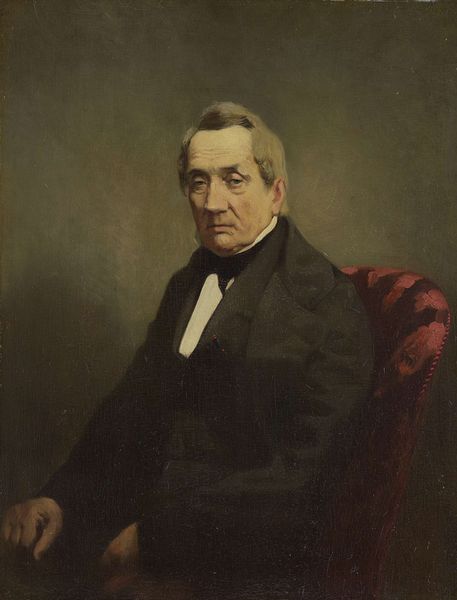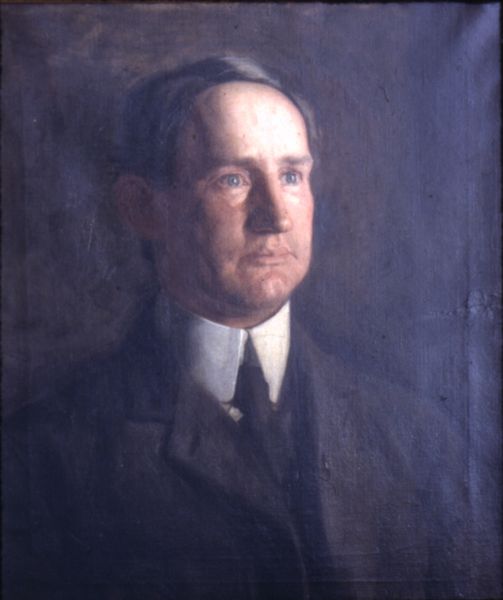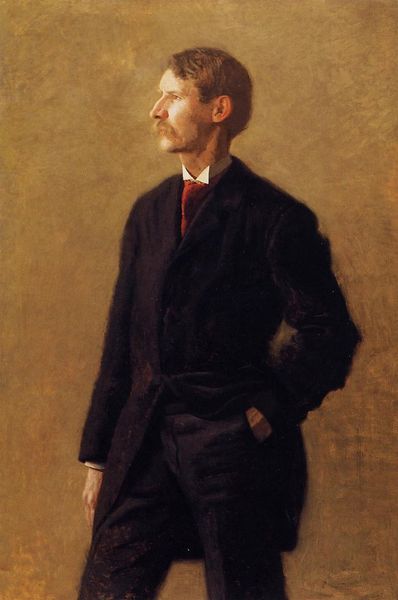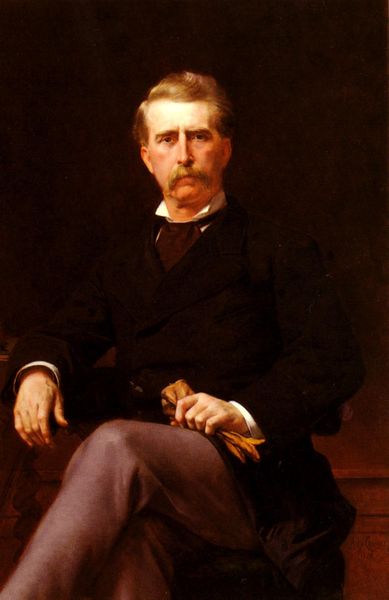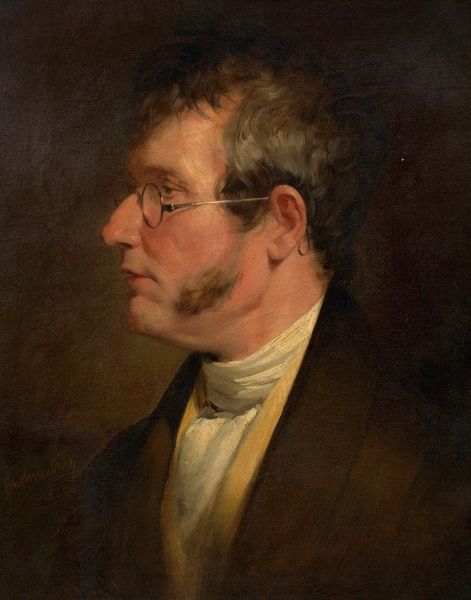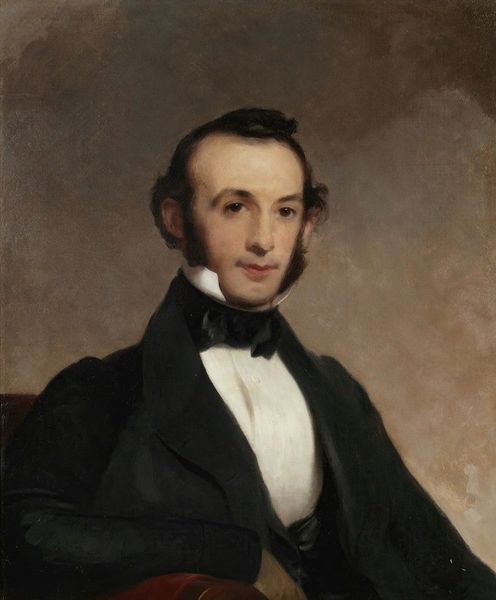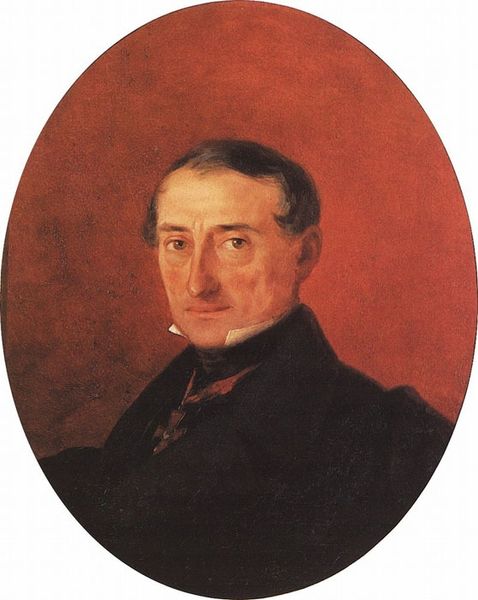
Copyright: Public domain
Curator: Let’s take a moment to observe this striking portrait by Thomas Eakins, painted in 1905. The subject is Asburyh W. Lee. Editor: My first impression is one of quiet dignity. The palette is muted, mostly dark browns and blacks, which contributes to a very serious, almost somber mood. The way he’s seated and the light falling on his face create a very deliberate composition. Curator: Eakins was well known for his realistic portraiture, and this piece is certainly a good example of that. But he also captured a spirit, reflecting on the social position of men like Asburyh W. Lee during the turn of the century. Eakins often explored the professional and intellectual class in Philadelphia, and here, he gives us a man confident but measured, almost world-weary. Editor: You can really see that in the subtle asymmetry of his face and his steady gaze. Notice how the artist plays with the textures. The smooth, almost reflective quality of his jacket contrasts beautifully with the duller background. It all directs your eye straight to the man's face. Curator: Eakins was often criticized for being unflattering. There's no idealization here. He portrays Lee with incredible detail, even showing signs of age. But that unflinching honesty is also what makes the portrait so compelling and historically valuable, isn’t it? He captures a person in totality. Editor: Indeed. The stark realism highlights the form and structure. Take his hands, for instance. They're rendered with a clear understanding of anatomy and weight, contributing to the subject’s composed presence. He isn’t making a statement; his mere presence *is* the statement. Curator: That's right. These commissions afforded Eakins the chance to examine societal figures. While his nudes and depictions of movement stirred controversy, these portraits grounded him in his present. I'm struck by the image of this man. We often read portraiture as an idealized marker of class or power. Yet here we can observe history resting in his being. Editor: Absolutely. It shows us how art can go beyond just depicting appearances, using those depictions to reflect something much deeper. I'll be walking away and contemplating the artist's dedication to showing us a person with depth and with age and grace.
Comments
No comments
Be the first to comment and join the conversation on the ultimate creative platform.
